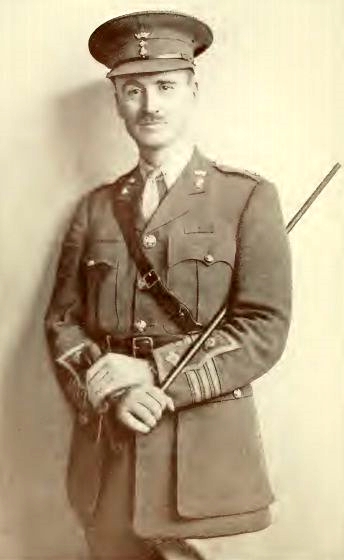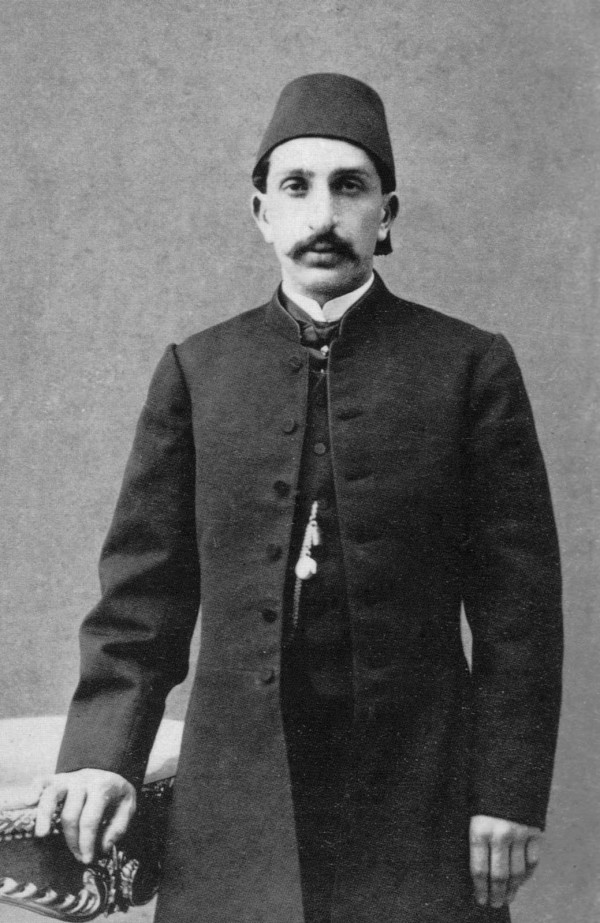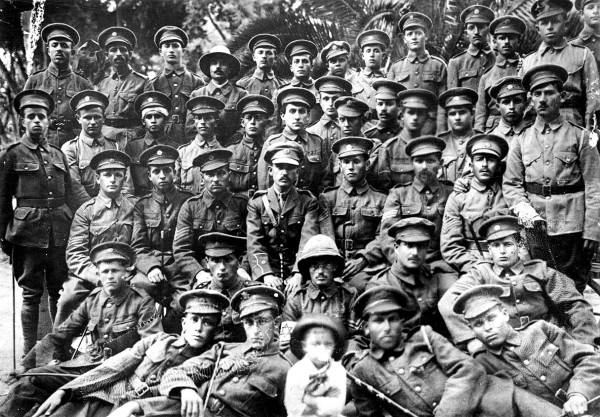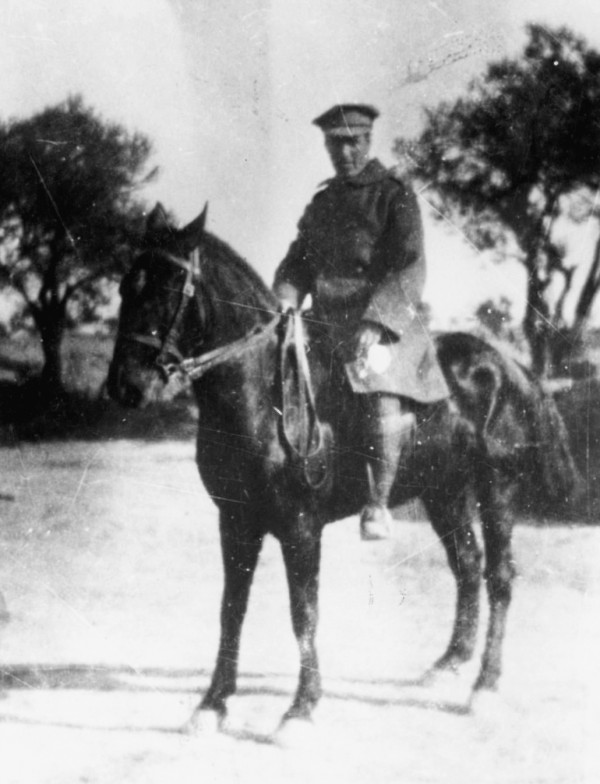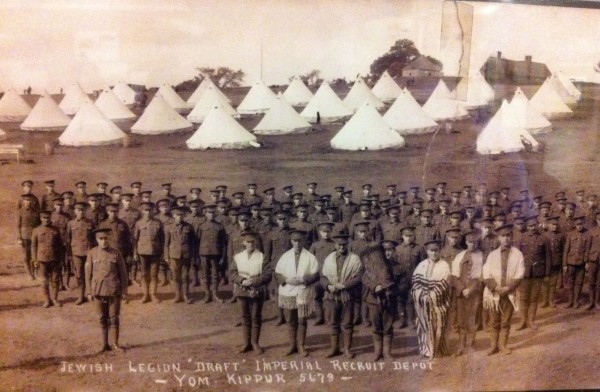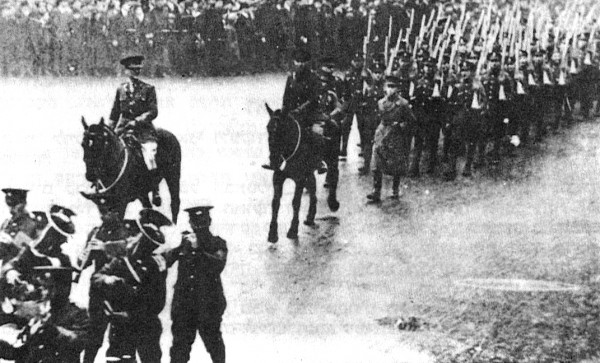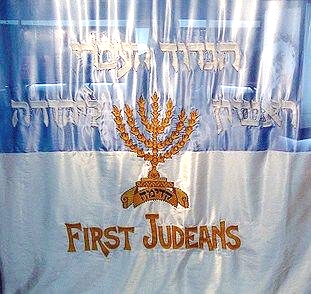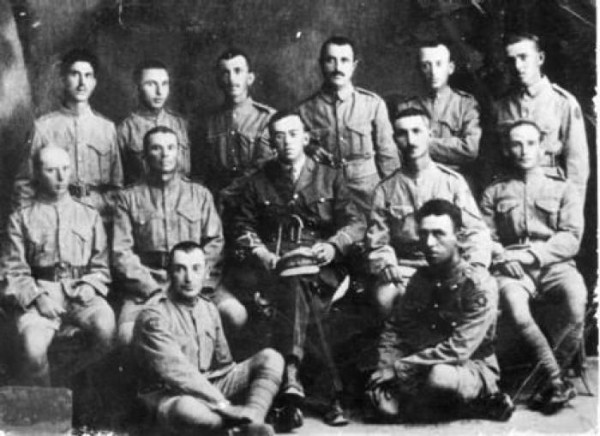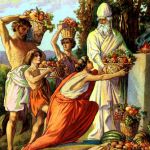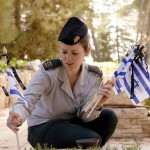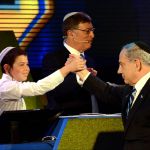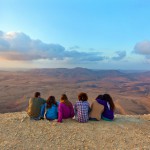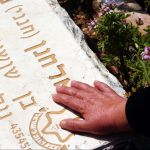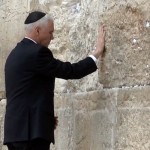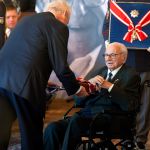“I will bless those who bless you, and whoever curses you I will curse; and all peoples on earth will be blessed through you.” (Genesis 12:3)
In honor of Remembrance Day (Veteran’s Day in the United States), we remember a Christian soldier who saw the fulfillment of Bible prophecy in the Jewish people’s longing for a homeland.
The ashes of Lt.-Col. John Henry Patterson rest with many of the men he commanded in Israel—with those he fought beside so boldly as part of Israel’s first organized fighting units: the Zion Mule Corps (the first Jewish fighting force since the Bar Kochba revolt in AD 132–136) and the Jewish Legion.
Those units saw service as a part of the British army in World War I at the battle of the Gallipoli peninsula in Turkey and in the Jordan Valley, fighting the Ottoman Turks.
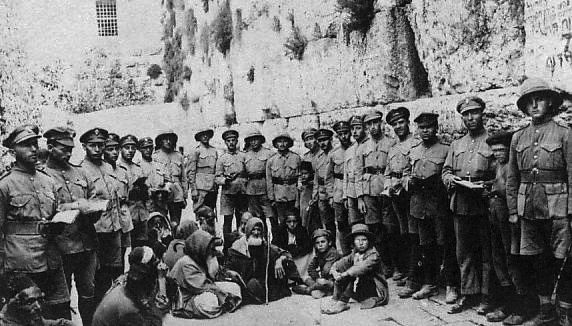
After liberating Jerusalem from the Ottoman Empire in the Battle for Jerusalem, Jewish Legion soldiers stand at the Western Wall in December 1917. They were part of the forces of British General Allenby.
Not unlike the great humanitarian Oskar Schindler, the German Catholic who risked his life to save 1,200 Jews during the Holocaust of World War II, Patterson, a non-Jewish Christian who was raised in an Irish home, risked much to stand with the Jewish People.
A dedicated Christian soldier, he is credited with being a central figure in the formation of the early Jewish defense force in pre-State Israel, forming the Jewish Legion that fought valiantly in the First World War.
He battled alongside such heroic figures as activist and military fighter Joseph Trumpeldor. He also fought with Zeev Jabotinsky, who is the founder of Etzel which is the acronym for the Irgun Tzvai Leumi—the right wing, pre-State national military organization that fought the British and called on European Jewry to immigrate to Mandate Palestine.
Jabotinsky said of Patterson, “Never in Jewish history has there been in our midst a Christian friend of his understanding and devotion.” (BCN)
A Friend of the Netanyahu Family
Patterson was born in Ireland on November 10, 1867 to a Protestant father and Roman Catholic mother.
At the age of 17, he joined the British Army. He lied about his age and got away with it because he looked older than his years. Patterson rose quickly through the ranks, reaching the rank of Lieutenant-Colonel.
Lt.-Col. Patterson fought in the Boer War and subsequently WWI. In 1940, he moved to California with his wife Francie. In 1947, he died at 79-years-old, with his wife following six weeks later.
His dying wish was to be interred in Israel close to the men he commanded during WWI.
Less than a year later, Israel would be born again in one day in fulfillment of Bible prophecy.
“Who has ever heard of such things? Who has ever seen things like this? Can a country be born in a day or a nation be brought forth in a moment? Yet no sooner is Zion in labor than she gives birth to her children.” (Isaiah 66:8)
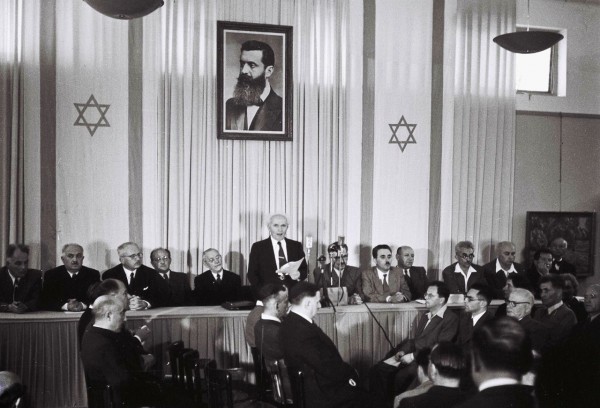
David Ben-Gurion (First Prime Minister of Israel) publicly pronounces the Declaration of the State of Israel on May 14, 1948 in Tel Aviv, Israel. Above him is a large portrait of Theodor Herzl, founder of modern political Zionism.
During his lifetime, Patterson maintained a close friendship with former Israeli Prime Minister Benjamin Netanyahu’s father, Ben-Zion, who was a member of the Irgun (Etzel). He was also its historian.
So beloved was he that Benjamin Netanyahu’s older brother was named after him: Lt.-Col. Yonatan (Jonathan) Netanyahu.
Jonathan Netanyahu became commander of the elite Israeli army commando unit Sayeret Matkal and was the sole causality at the 1976 Entebbe raid which he commanded.
In commemoration of Lt.-Col. Patterson, former Prime Minister Netanyahu wrote:
“Lt.-Col. Patterson was one of the founders of the Jewish Legion, the first Jewish military force since the Bar Kochba Revolt and the basis upon which the IDF was established. My parents always spoke warmly of Lt.-Col. Patterson, who worked alongside my father in the 1940s in the US to promote the Zionist idea.
“When my older brother was born, my father called him Yonatan [Jonathan] after Lt.-Col. Patterson and my grandfather, Natan. Lt.-Col. Patterson attended Yoni’s circumcision and gave him a silver cup engraved with the words, ‘To my beloved godson Yonatan from Lt.-Col. John Henry Patterson.’
“This was a link between the commander of the renewed Jewish force and one of the future military commanders of the State of Israel.”
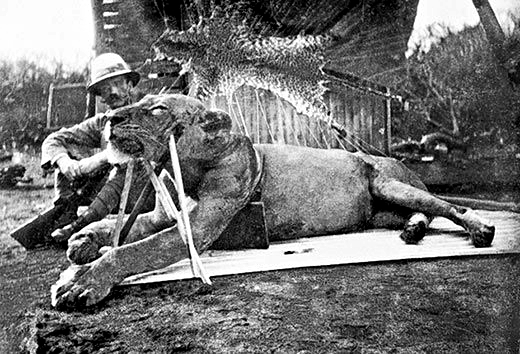
Patterson sits beside the first of the two maneless man-eating lions. These notorious, exceptionally large man-eaters killed a number of construction workers on the Kenya-Uganda Railway from March to December 1898. Patterson, who due to his military service in India was an experienced tiger hunter, killed the first lion on December 9 and the second on December 29 while being stalked by it.
The Ghost and the Darkness
Although he fought for the right of the Jewish People to have their own homeland in Israel, Lt.-Col. Patterson’s fame goes back even further.
In 1898–99, when he was an engineer working in Kenya on the railway bridge over the Tsavo River, he courageously cleared the area of man-eating lions that had brought work to a standstill.
The lions were attacking and eating members of Patterson’s workforce, as well as local villagers. His expertise at taking out the wild beasts (often with a single shot) earned him celebrity status among the natives.
The details of this story are recorded in his book The Man-Eaters of Tsavo (1907) and graphically presented in the 1996 Paramount film The Ghost and the Darkness, in which he is portrayed by actor Val Kilmer.
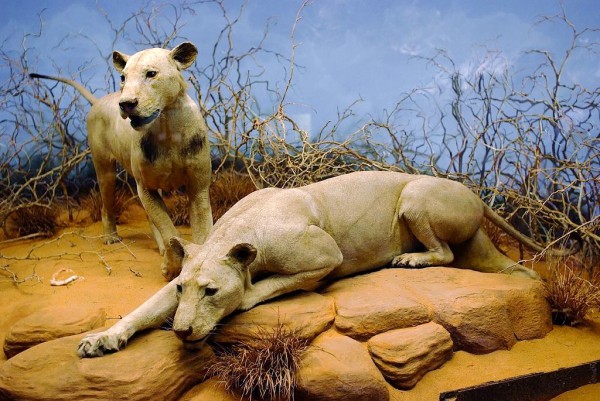
The Tsavo Man-Eaters that Patterson killed are on display in the Field Museum of Natural History in Chicago, Illinois. Tsavo lions are a distinct variety of Masia lions. Male Tsavo lions are usually larger than other male lions and are maneless. Unlike other lion varieties, they hunt with the females. And unlike the prides of other lion varieties, there is only one male in a Tsavo pride, which consists of seven to eight females.
The Ottomans and Anti-Semitism: Enemies of a Jewish State
Establishing a bridge in the presence of man-eating lions proved to be good training for what lay ahead. With the advent of World War I, Patterson became involved in the formation of a Jewish Legion to fight the Ottomans in Turkey.
At that time, pre-State Israel was under the authority of the Ottoman government.
Any hope of statehood lay in defeating that government since the Turkish Sultan had already turned down requests for independence by the leader of the World Zionist Organization, Theodore Herzl.
Herzl met with Sultan Abdul Hamid II offering to pay off the Turkish national debt in exchange for a homeland in Palestine. The Sultan refused the offer.
Facing such inflexibility by the Ottomans and with the advent of World War I, Zionists shifted their hopes to the British who were allied with France in fighting the Central Powers, which included both Germany and Turkey.
In this context, people such as Trumpeldor and Jabotinsky, who supported a military solution, wished to form a Jewish Legion and fight with the Allies.
Patterson was in favor of forming a Jewish Legion to fight with British forces, but he met with a strong tradition of anti-Semitism within the British military.
His experience in dealing with this issue is best described by British Jewish author Israel Zangwell in the dedication of Patterson’s book, With the Judeans in the Palestine Campaign.
That dedication states,
“In making acquaintance with my friend, Colonel Patterson, Canada will become acquainted with one of the bravest of living soldiers and one of the boldest of living hunters.
“But the heroism he has displayed in the jungle or on the battlefield is eclipsed by the courage he has shown spiritually in championing and defending the Jews, to whom he is bound neither by race nor by religion.
“It was he who led and inspired the Jewish forces in Gallipoli and Palestine, it is to him—doughty with pen as with sword—that the world is indebted for the knowledge of their achievements, it is to his chivalry that we owe the assertion of their claims and the record of their grievances.
“A man of the simplest and most lovable character, imperturbable, breezy, hopeful and humorous, a crusader in a truly Christian spirit, whose aim is to restore Palestine not to Christendom, but to the only homeless people on earth. Colonel Patterson has written his name indelibly on the scroll of Jewish as well as British history.”
Although the British army hesitated to form a Jewish Legion, it did agree to establish a mule transport detachment. The Zion Mule Corps (ZMC) was born, and 650 Jewish men were assigned under its first commander, Lt.-Col Patterson.
When Patterson swore in the men on March 31, 1915, he invited them to “pray with me that I should not only, as Moses, behold Canaan from afar, but be divinely permitted to lead you into the Promised Land.”
Writing about the training camp, Patterson noted that “never since the days of Judah Maccabee had such sights and sounds been seen and heard in a military camp—with the drilling of uniformed soldiers in the Hebrew language.”
Jewish Troops and the Victory Over Anti-Semitism
The Zion Mule Corps saw action in the Gallipoli Campaign in April of that year. Together with the first British, Australian, New Zealand and French troops, the corps landed on the peninsula on April 25th.
There they met with heavy shelling and machine-gun fire at the shore of Cape Helles on the south-westernmost tip of the Gallipoli Peninsula in Turkey.
During the engagement, Trumpeldor, who was second in command, and who had earlier lost his left arm while fighting in the Russian Army in 1902 at Port Arthur against the Japanese, was shot in the shoulder.
Writing later of the event, Patterson reported being surprised by the bravery of the Jewish troops: “Many of the Zionists whom I thought somewhat lacking in courage showed themselves fearless to a degree when under heavy fire, while Captain Trumpeldor actually revelled in it, and the hotter it became the more he liked it.”
In an interview with the British Jewish Chronicle later that year, Patterson said, “These brave lads who had never seen shellfire before most competently unloaded the boats and handled the mules whilst shells were bursting in close proximity to them … nor were they in any way discouraged when they had to plod their way to Seddul Bahr, walking over dead bodies while the bullets flew around them … for two days and two nights we marched … thanks to the ZMC the 29th Division did not meet with a sad fate, for the ZMC were the only Army Service Corps in that part of Gallipoli at that time.”
Of the 300 men who saw action under Patterson, 14 were killed. The remaining fighters had been assigned to the Australian and New Zealand forces who had discourteously refused to fight with them, sending them back to Egypt.
The Formation of the Jewish Legion
Later in the war, in the summer of 1917, the Jewish Legion was formed, officially called the Royal Fusiliers.
The 38th Battalion, formed in August 1917, included British volunteers, former members of the Zion Mule Corps, and many Russian Jews. The 39th comprised mostly Jews from the United States and Canada.
In 1918, more than a thousand Palestinian Jews and 92 Ottoman Jews who had been captured in earlier fighting became the 40th Battalion.
At that time, Patterson was promoted to full Colonel and given command of the 38th Battalion of the Royal Fusiliers.
In February of 1918, Patterson had the honor of leading the 38th Fusiliers Battalion along with the other two battalions of the Jewish Legion in a parade through Whitechapel Road as they were being shipped off to fight in Palestine.
The Jews of London loudly applauded them as other bystanders looked on in amazement.
Initially, anti-Semitism in the ranks of the British commanders in Palestine kept the Legion from fighting; however, in June of 1918 the force was brought from Egypt and sent to relieve the Grenadier Guards in Jaljulya.
They were then attached to the 60th Division and sent to the Jordan valley where they became a key element within the British line along the Melhallah rift. On September 19, they crossed the Jordan at Umm Es Shert and held Es Salt in what later became Transjordan.
Following the armistice, the 38th Battalion was sent to Rafa where Patterson was made commander of the Rafa area, holding command of the Sinai, Gaza and southern Palestine.
In May of 1919, the 38th Battalion combined with the 39th and 40th forming the Lahore Division.
It was renamed the “First Judeans” and assigned garrison duty in Palestine.
In January of 1920, Patterson retired and was replaced by a Jewish commander, Col. Eliezer Margolin. The Legion was disbanded when Margolin attempted to use them to defend Jewish lives from Arab mobs in Jaffa in the uprisings of 1921.
The Reward for Supporting Jewish Troops
When Patterson retired, he had the same rank that he had held when the war began. It is generally believed that he sacrificed promotions in rank so he could stay close to his troops and ensure that they were treated well.
Patterson wrote two books describing his experiences with Jewish forces: With the Zionists at Gallipoli (1916) and With the Judeans in the Palestine Campaign (1922).
Following the war, Patterson became an active supporter of Israel’s right to exist, including joining a delegation of the Keren Hayesod (the fundraising arm of the nascent Jewish community or Yeshuv, in Mandate Palestine) to the US in 1921–22.
Jabotinsky, who headed the delegation, wrote about Patterson, “I make the appeal for funds, then they begin the collection, and no one leaves the hall because they are waiting for Patterson to speak.” (zionism-israel)
Patterson remained a strong supporter of the Zionist cause and of the Jewish People in general.
He was an active member of the Bergson Group under Irgun revisionist Hillel Kook, the nephew of Chief Ashkenazi Rabbi Abraham Isaac Kook, a far right movement of Haganah dissidents.
In 1940, he promoted the formation of a Jewish army in the United States to fight the Nazis and stop the Holocaust.
He was also a member of the Emergency Committee to Save the Jewish People of Europe.
After Patterson moved to the US, the British government cut off his disability pension during World War II claiming that it was not possible to securely transfer funds overseas.
This created a severe financial hardship for Patterson and his wife. Through all this, he continued to work for and support the establishment of a Jewish homeland in Palestine, which became a reality the year after his death.
Now he rests in the Jewish state that he did so much to help create—but, like faithful Moses, never lived to see its formation.




